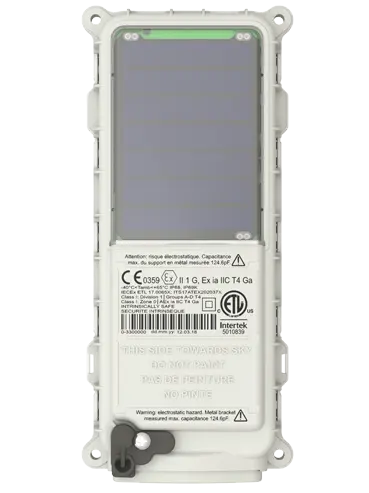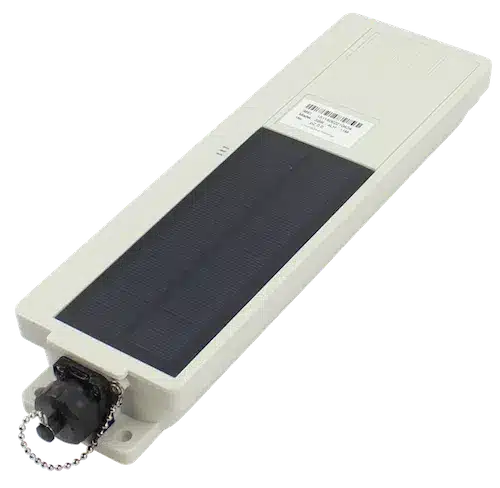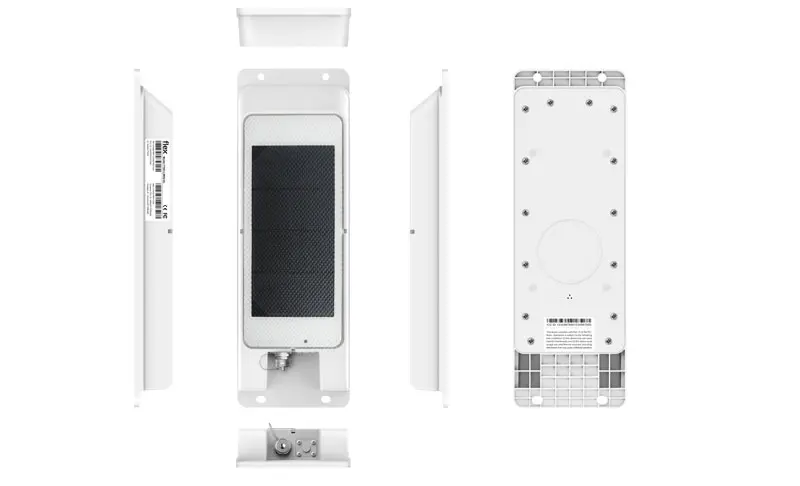Selecting an Asset Tracker
Whether you’re managing a fleet of vehicles, monitoring equipment, or overseeing valuable assets, the right tracking technology can significantly enhance efficiency, reduce costs, and improve overall fleet performance. Explore our guide to discover key considerations, from tracking technologies and accuracy to battery life and integration capabilities, ensuring that your choice aligns seamlessly with your organization’s goals. Selecting the right asset tracker for your needs involves considering various factors to ensure that it aligns with your requirements and operational goals. Here are some key things to consider when choosing an asset tracker.
Selecting an Asset Tracker
Things to consider when selecting an Asset Tracker
There are three main variables that must be prioritized and balanced when selecting an asset tracker that best suits the needs of your fleet and equipment.
Data Resolution
Network Coverage - Satellite
Satellite communication networks provide real-time communication in very remote and non-urban areas while covering most of the planet. Satellite communication can be more sensitive to environmental conditions such as trees and buildings, and it is important to have an unobstructed line of sight with the sky to provide contact with the orbiting satellites. Satellite communication is also significantly more expensive than terrestrial cellular communication. For this reason, the interval of reports and the amount of data typically needed is much less. Only specialized systems and industries provide high resolution satellite tracking because price is not a concern. Think about the monthly cost difference between a satellite telephone and a cell phone. The same modems used in phones are often used in GPS asset tracker.
Investment/Cost
Network Coverage - Cellular
Cellular communication networks offer the ability to deliver higher amounts of data and detail for a very affordable rate. These are the same networks that we use to browse the internet on our cell phones. Cellular networks provide great coverage in populated areas but just like when you’ve gone camping with the family in a remote area sometimes you will find that your phone no longer has a signal for long periods of time. Northern Canada, Alaska, South America and parts of the US don’t have much cell coverage, however most cellular tracking systems will store data when not in coverage and will transmit it when the GPS tracker returns to cellular network coverage ensuring your data is not lost.
Asset Tracker Hardware
There are three primary ways to power an asset tracker. Some systems offer a combination, but few will do all three. The three options can be found on GPS trackers that work on both the satellite communication network and the cellular communication network. Consider your GPS devices when selecting an asset tracker.

Battery Powered Asset Trackers offer a very convenient installation process. New units can be mounted with screws or with a magnetic base. There is no need to run wires for power and most anyone can do the installation. When considering a battery powered asset tracker, it’s good to plan for eventually replacing or recharging the batteries as they approach the end of their life cycle. A batteries’ lifespan will depend on the reporting rate chosen for the unit. More frequent updates will drain the battery faster than less frequent reporting intervals.
There are three battery options, rechargeable, non-rechargeable but replaceable, and non-rechargeable and non-replaceable. All three battery options have appropriate applications. Rechargeable batteries can easily be added to a maintenance schedule and charged every year or as needed. Most replaceable battery trackers use lithium-ion batteries that can be purchased off the shelf, but some asset trackers have proprietary batteries that will need to be special ordered. If using a unit that requires a proprietary battery it is best to maintain an inventory on hand so you will always have replacements when needed. Rechargeable batteries are typically smaller because they are meant to be recharged more often. Non-rechargeable, non-replaceable batteries are generally the largest and the entire GPS device is discarded when it expires. It’s important to understand your expected battery life and recharge or replace batteries before they completely drain to avoid losing contact with the asset.
A 3-wire powered asset tracker is wired to the power supply of the equipment or asset being tracked. This ensures that it always has power so the requirement for a backup battery may not be as important. Many fleet managers prefer powered asset trackers that have backup batteries to track the asset when it is not in use. This is helpful for inventory and theft mitigation. Backup batteries are not intended to last as long as a dedicated battery asset tracker so be sure you understand the requirements for battery power when the GPS tracker is not getting power from the asset’s own power system.

Solar powered asset trackers are becoming far more popular because they reduce the need for battery maintenance and provide an easy installation. Solar powered asset trackers are a good choice when selecting an asset tracker when the goal is an easy to maintain and reliable GPS tracker that will last for 3-5 years. After 3-5 years, replacing the device is often needed. Solar units may not be the best choice when more frequent update rates are desired because they are slower to recharge and require a lot of sunlight. Climate can also affect their ability to recharge. Fleets that operate in long snowy winters may have more difficulty keeping the units powered than fleets that tend to stay in warmer more temperate parts of the country. If you are installing a device on a fixed asset, pay attention to the angle of the sun and mount it on the appropriate side to get the most sunlight.
Selecting an Asset Tracker for Harsh Conditions – Asset Tracker Construction
How an asset tracker is constructed is important, as not all asset trackers are built with the same amount of weather proofing. Some asset trackers meet military specifications and have a price tag to match. Most asset trackers are made for commercial applications and have a compromise between durability and price. Matching the construction to the intended application will provide for a longer life. Most asset trackers come with a 1-year warranty against standard defects, but this does not include water or sand intrusion. To be safe, never pressure wash an asset tracker at less than 3 feet. The thickness of the material, number of screws (or lack of any screws in a molded device) and the seal around the wiring harness if applicable contribute to the life expectancy of an asset tracker. Extreme heat and cold can also play a big part in the longevity of the device and need to be taken into consideration when selecting an asset tracker.
IP Rating
Quality asset trackers will be IP rated which means they have been tested to meet an international standard for water, dirt, vibration, and other known hazards. The lower the IP number, the less durable the asset tracker will be. You want to see IP-67 or IP-68 for asset trackers.
Intrinsically Safe is defined as “equipment and wiring which is incapable of releasing sufficient electrical or thermal energy under normal or abnormal conditions to cause ignition of a specific hazardous atmospheric mixture in its most easily ignited concentration.” Intrinsically safe is often a requirement when operating around liquid fuels and explosives. If intrinsically safe is needed, the number of asset trackers available is far fewer. This is often a specification in the oil and gas industry. Learn More About IP Ratings
Investment
Backup Battery Performance
Make a Checklist for Selecting an Asset Tracker
By carefully considering these factors, you can select an asset tracker that best suits your specific needs and contributes to the overall efficiency of your operations.

- IP-67 rated – required
- Do you need a backup battery to aid in theft recovery?
- Do you need an equipment tracker or asst tracker (see above) ?
- How frequently do you need to get position information?
- Do you need satellite communication or will cellular work?
- Do you need a powered or unpowered GPS tracker?
- Do you need an integrated solution with fleet vehicles?
- Do you need engine hours for maintenance or rental data?
- Do you need engine diagnostics or telematics data?
Selecting the right asset tracker for your needs
Selecting an asset tracker for your needs involves considering various factors to ensure that it aligns with your requirements and operational goals. Here are some key things to consider when choosing an asset tracker:
Type of Assets
Identify the type of assets you need to track. Different trackers may be suitable for vehicles, equipment, containers, or other types of assets.
Real-Time Tracking
Communication Network
Geographical Coverage
Contact us today to learn more about selecting an asset tracker and how it can benefit your business.
